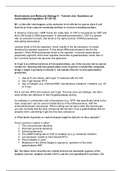Tentamen (uitwerkingen)
TEST BANK For Corporate Finance, 13th Edition By Stephen Ross, Randolph Westerfield, Verified Chapters 1 - 31, Complete Newest Version
TEST BANK For Corporate Finance, 13th Edition By Stephen Ross, Randolph Westerfield, Verified Chapters 1 - 31, Complete Newest Version TEST BANK For Corporate Finance, 13th Edition By Stephen Ross, Randolph Westerfield, Verified Chapters 1 - 31, Complete Newest Version Test Bank For Corporate Fin...
[Meer zien]




